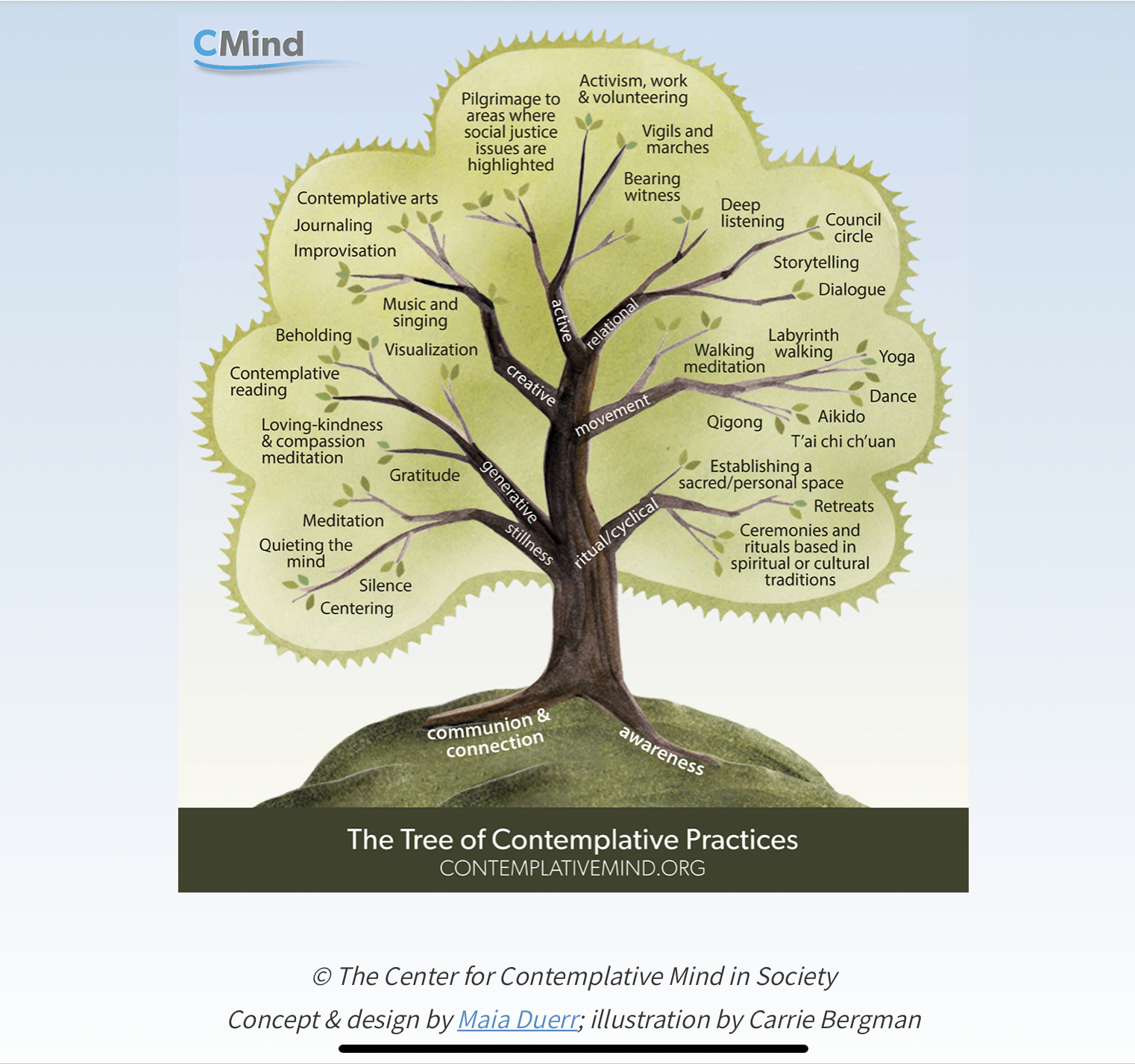Centering Prayer Practice
Thomas Keating Centering Prayer Guidelines
Practice: Centering Prayer
Centering prayer is a simple form of Christian meditation developed in the 1970s by three Trappist monks: Thomas Keating, William Meninger, and Basil Pennington. Read Phileena Heuertz’s introduction to this practice and then take some time to walk through the steps:
Centering prayer roots us in divine love. It is a modernized prayer method based on the intuitive prayer rooted in lectio divina and The Cloud of Unknowing. It is a method of silent prayer that prepares us to receive the gift of contemplative prayer—prayer in which we experience the divine’s immanent presence within us. Centering prayer is grounded in relationship with God, through Christ, and is a practice to nurture that relationship. . . .
Centering prayer complements and supports other modes of prayer—verbal, mental, or affective prayer. It facilitates resting in the divine presence. Centering prayer offers a way to grow in intimacy with God, moving beyond conversation to communion.
As Father Thomas [Keating] emphasizes, the source of centering payer, as in all methods leading to contemplative prayer, is the indwelling Trinity: Father, Son, and Holy Spirit. The focus of centering prayer is the deepening of our relationship with the living Christ. The effects of centering prayer are ecclesial, as the prayer tends to build communities of faith and bond the members together in mutual friendship and love.
To practice centering prayer, follow these steps.
Sit in an upright, attentive posture in a way that allows for a straight spine and open heart. Place your hands in your lap.
Gently close your eyes and bring to mind your sacred word, image, or breath as your symbol to consent to the presence and action of God within you. Your sacred symbol is intended to be the same every time you pray. It helps to ground you in the present moment. It allows you to give your undivided, loving, yielded attention to God. Choose a name for God or an attribute of God like love, peace, and so on. You may prefer a sacred image instead or simply a mindful breath.
Silently, with eyes closed, recall your sacred symbol to begin your prayer. As you notice your thoughts, gently return to your sacred symbol. Do this however many times you notice thoughts, feelings, or sensations.
When your prayer period is over, transition slowly from your practice to your active life.
It is recommended to pray in this fashion for a minimum of twenty minutes, two times a day. Start out slowly with initial prayer periods of five to ten minutes, then work up to the desired length of time.
Phileena Heurtz, Mindful Silence: The Heart of Christian Contemplation (InterVarsity Press: 2018), 158-159.
OTHER Contemplative Practices:
Drumming: Practicing surrendering the mind and attuning the body through rhythm
Walking Meditation: Taking slow, mindful steps
Ecstatic Dance: Moving freely to music
Chanting: Singing with intention
Centering Prayer: Observing and letting go of all thoughts without judgment during a period of silence
Lectio Divina: Reading short passages of text in a contemplative way
Christian Meditation: Repeating scripture or a sacred word as a mantra
Welcoming Prayer: Welcoming any feeling, sensation, or emotion that arises in the midst of your day
YHWH Prayer: Consciously saying God’s name through each breath
Pranayama: Breathing mindfully
Loving Kindness Meditation: Recognizing your inner source of loving kindness and sending love to others
Books and recordings by CAC core faculty:
Cynthia Bourgeault
Centering Prayer and Inner Awakening (book)
Chanting the Psalms (book and CD)
The Heart of Centering Prayer: Nondual Christianity in Theory and Practice (book)
James Finley
Richard Rohr
Beginners Mind (CD, MP3 download)
Contemplative Prayer (CD, MP3 download)
Emotional Sobriety: Rewiring Our Programs for Happiness (DVD, CD, MP3 download)
Everything Belongs: The Gift of Contemplative Prayer (book)
The Naked Now: Learning to See as the Mystics See (book)
Additional recommended resources:
A Beautiful Prayer: Answering Common Misperceptions about Centering Prayer, by Peter Traben Haas
Centering Prayer: Renewing an Ancient Christian Prayer Form by M. Basil Pennington
Intimacy with God: An Introduction to Centering Prayer by Thomas Keating
Journey to the Heart: Centering Prayer for Children by Frank Jelenek
Open Mind, Open Heart by Thomas Keating
The Path of Centering Prayer: Deepening Your Experience of God by David Frenette
Visit Contemplative Outreach to download an introductory pamphlet on Centering Prayer
Visit Meditation for Children if you would like to learn more about how to teach centering prayer or other silent meditation practice to children.
World Community for Christian Meditation was established under the teaching of Benedictine monk John Main. To learn a slightly different method of this way of praying, visit their website.

